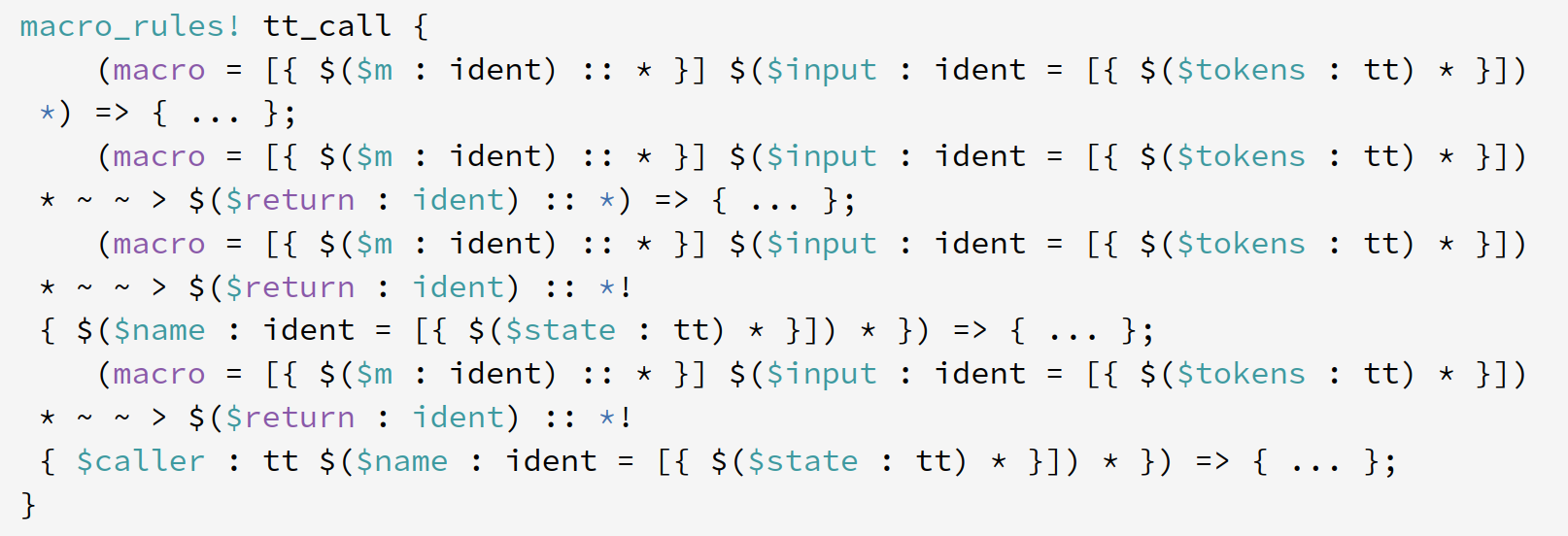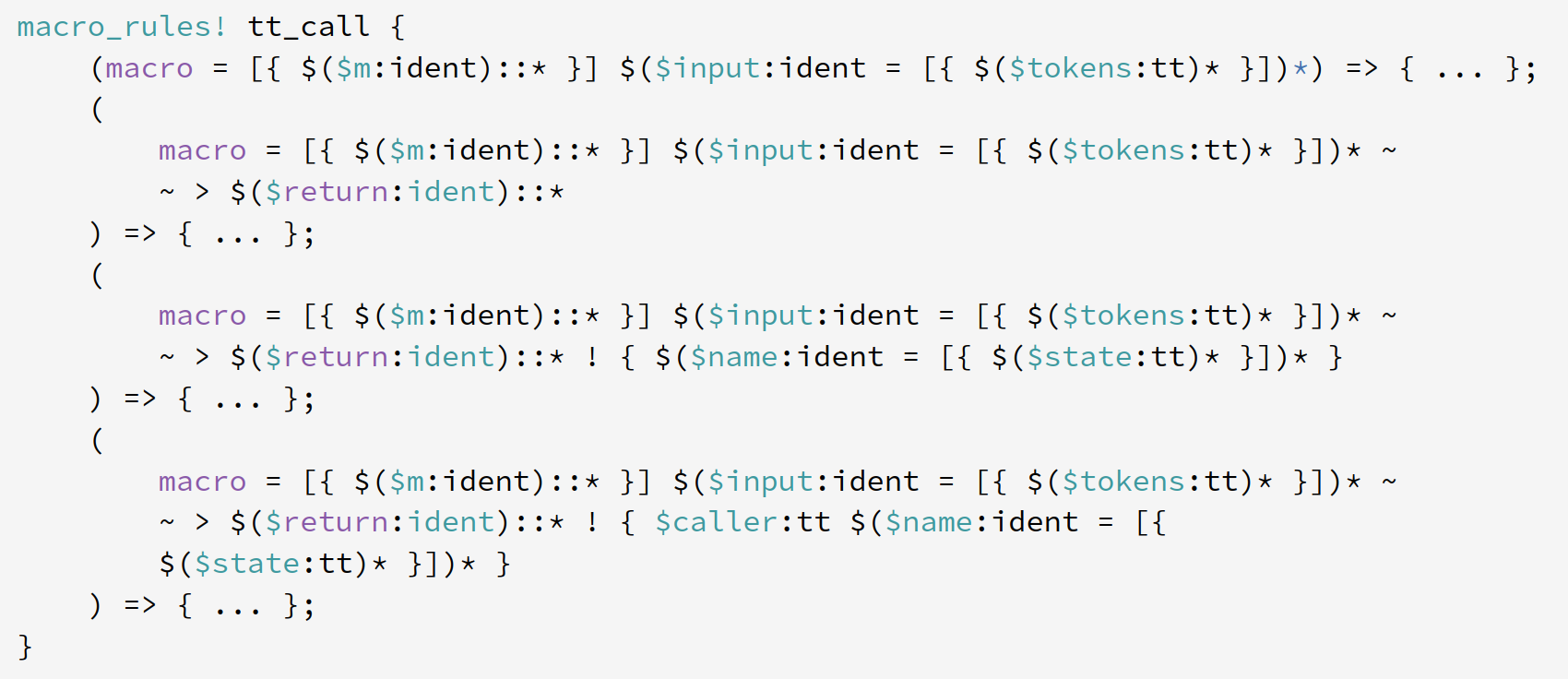Factor convenience functions out of main printer implementation
The pretty printer in rustc_ast_pretty has a section of methods commented "Convenience functions to talk to the printer". This PR pulls those out to a separate module. This leaves pp.rs with only the minimal API that is core to the pretty printing algorithm.
I found this separation to be helpful in https://github.com/dtolnay/prettyplease because it makes clear when changes are adding some fundamental new capability to the pretty printer algorithm vs just making it more convenient to call some already existing functionality.
Previously the pretty printer would compute indentation always relative
to whatever column a block begins at, like this:
fn demo(arg1: usize,
arg2: usize);
This is never the thing to do in the dominant contemporary Rust style.
Rustfmt's default and the style used by the vast majority of Rust
codebases is block indentation:
fn demo(
arg1: usize,
arg2: usize,
);
where every indentation level is a multiple of 4 spaces and each level
is indented relative to the indentation of the previous line, not the
position that the block starts in.
Render more readable macro matcher tokens in rustdoc
Follow-up to #92334.
This PR lifts some of the token rendering logic from https://github.com/dtolnay/prettyplease into rustdoc so that even the matchers for which a source code snippet is not available (because they are macro-generated, or any other reason) follow some baseline good assumptions about where the tokens in the macro matcher are appropriate to space.
The below screenshots show an example of the difference using one of the gnarliest macros I could find. Some things to notice:
- In the **before**, notice how a couple places break in between `$(....)`↵`*`, which is just about the worst possible place that it could break.
- In the **before**, the lines that wrapped are weirdly indented by 1 space of indentation relative to column 0. In the **after**, we use the typical way of block indenting in Rust syntax which is put the open/close delimiters on their own line and indent their contents by 4 spaces relative to the previous line (so 8 spaces relative to column 0, because the matcher itself is indented by 4 relative to the `macro_rules` header).
- In the **after**, macro_rules metavariables like `$tokens:tt` are kept together, which is how just about everybody writing Rust today writes them.
## Before

## After

r? `@camelid`
PrintStackElems with pbreak=PrintStackBreak::Fits always carried a
meaningless value offset=0. We can combine the two types PrintStackElem
+ PrintStackBreak into one PrintFrame enum that stores offset only for
Broken frames.
The pretty printer algorithm involves 2 VecDeques: a ring-buffer of
tokens and a deque of ring-buffer indices. Confusingly, those two deques
were being grown in opposite directions for no good reason. Ring-buffer
pushes would go on the "back" of the ring-buffer (i.e. higher indices)
while scan_stack pushes would go on the "front" (i.e. lower indices).
This commit flips the scan_stack accesses to grow the scan_stack and
ring-buffer in the same direction, where push does the same
operation as a Vec push i.e. inserting on the high-index end.
Replace trivial bool matches with the `matches!` macro
This derives `PartialEq` on one enum (and two structs it contains) to enable the `==` operator for it. If there's some downside to this, I could respin with the `matches!` macro instead.